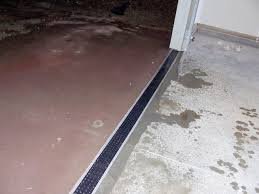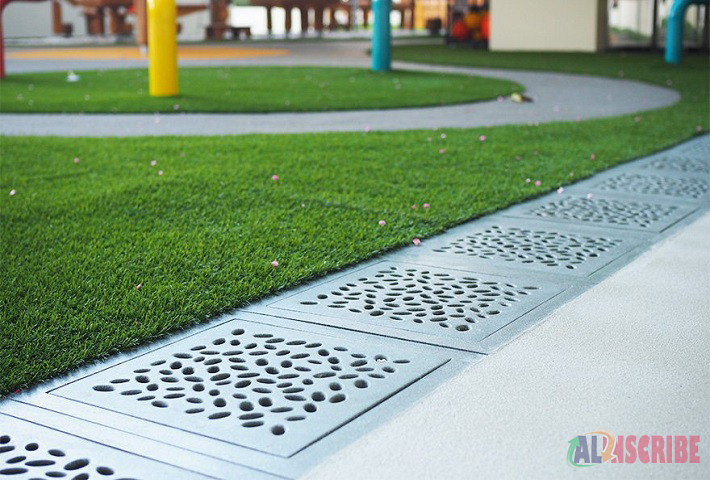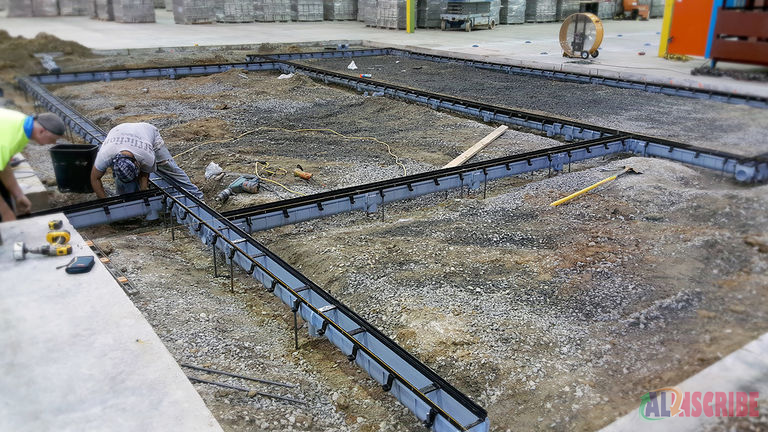How Can I Put A Floor Drain In My Garage?
Author: Robertcash
Published in: Home Improvement

When I purchased my home, the builder made a point of stating that the garage was sloped as if it would certainly run all the water outside.
It does not.
So I started looking at whether you can add a flooring drainpipe to an existing garage floor.
Can you place a flooring drainpipe in an existing garage?
Yes, also if the floor is simply a concrete piece. The drain can be affixed to an existing sewer line or simply flow to an overflow exterior. If water is merging in your garage, a floor drainpipe can help you eliminate the mess before it spreads right into your house.
Simple Solution is Trench Drain System for Garage.
There are some extra steps and also considerations you need to take before you begin to dig. Let's discuss them currently.
Check if you require a license
Before you begin destroying your garage floor to mount a drainpipe, you require to figure out if your community allows it.
Begin by consulting your neighborhood structure authorities to learn the building regulations, permit guidelines, as well as examination requirements. Don't do anything else up until you make sure the drain is allowed, and also you recognize the other legal requirements.
I wrote a post going over whether you required an authorization to drywall your garage. It's a different project, however a great deal of the details still applies, so examine it out.
The bottom line is that it's much easier to reach out to your neighborhood building code office prior to you begin making changes. Or else, you may need to undo all the improvements you made.

Place It theoretically
When you have the green light to proceed, begin by preparing a plan.
Garage floorings that include a drainpipe are graded with the drain at the lowest factor. These floorings drain pipes on their own without any pooling.
To retrofit a drain to your garage floor, identify the place where water swimming pools naturally. This is where you will certainly situate the drain.
If your garage is sloped in such a way that it forces the water to go out under the door, after that you probably get by without a drain. Just squeegee the water towards the door and also gravity ought to deal with the rest.
As soon as you have the low-point in the floor picked, establish if you want to link the brand-new drainpipe right into the existing sewage system line. Keep in mind: In lots of towns, this isn't permitted. Do your study in advance!
If you plan on tying your floor drainpipe into the drain lines, be aware it's for water only.
Any type of hazardous materials in the garage (including fuel and also oil) must be kept from going into the sewage system line.
Equipment is readily available to secure the water supply from hazardous chemicals-- mount it if you assume you could rinse oil or various other chemicals down the tubes. Some jurisdictions need this in a garage drain, whatever.
Relying on your layout, it may be much easier to make a brief trench in the concrete floor and a longer trench in the dirt exterior.
Even if it's not one of the most straight course, digging dirt is a great deal much easier than breaking up concrete.
Check Where You Are Digging
Check the location of any kind of existing water lines or other utilities in the piece where you will be working. The last point you want is additional water in your garage from a broken water line.
Prior to you dig, you will certainly require to phone call to have the energy business mark the location of existing below ground lines. In the United States and Canada, you can do that by simply calling 811.
If you do not call 811 and also hit an utility line, you are legally and also economically responsible for any problems. You should constantly call 811 prior to any kind of excavation.
Obtain the Right Devices
When you have actually planned the new line as well as obtained licenses, it's time to reach work.
Setting up a flooring drainpipe in a garage needs making use of a jackhammer or concrete saw (or both). Concrete work is tough, and cheap devices aren't really up to the work.
Your best choice is to rent the tools you require after that send them when you're done.
Digging the Drainpipe Trench
You'll require to cut a trench in the piece from the place where the drainpipe will be to where it leaves the structure. The trench ought to be about two times as broad as the pipeline and deep sufficient to fit the pipe plus the drain component itself, plus a little extra so you can incline the pipeline downward.
I advise using a concrete saw. It will make straight sides on the trench. You'll still need to break the center of the trench out with an additional device, though.
If you have actually cut a deep enough trench, you must be able to split the center piece right into smaller sized sections and life them out with a crowbar. Otherwise, you might need to make use of a sledgehammer or jackhammer to break up the concrete.
It is very important to make the trench deep sufficient at the beginning to fit a p-trap at the drainpipe!
The p-trap (also called a u-bend) is a bend in the pipe that is shaped like a U. It will constantly hold sufficient water to keep the pipeline sealed as well as prevent sewage system gas from leaking into your garage.
When you have a trench within, dig a connecting trench outside also. The outside trench must start beside the slab where the pipeline will leave as well as remain to the last drainage factor.
Lay the Pipeline
Once all the trenches are dug, it's time to lay pipe.
It is necessary to keep the pipeline sloping downward from your garage to the endpoint.
Drain drains pipes are gravity circulation events. You require the slope to make the water maintain relocating from the garage, via the pipeline, to the primary drain line. If essential, shim the top end of the pipeline to compel it to incline.
Think about setting up a clean-out in the pipe after it departures the slab. You may never ever need it, yet it behaves to have if anything ever fails with the pipe.

Refinish the Concrete Flooring
When your pipe is laid, as well as you enjoy with the incline, it's time to fill up the hole with self-leveling concrete so it behaves and also smooth.
Before you pour the concrete, make sure to cover the drainpipe somehow (can, timber, or an additional piece of pipe) to keep concrete out of your new drainpipe.
Mix the concrete a little at a time and put it in the trench. Let it drop down and also smooth the brand-new concrete with a trowel. Utilize a trowel to smooth the brand-new concrete after you pour it.
Staining the concrete or setting up floor covering can conceal the marks of the trench if you are worried regarding looks.
Outside, it's a lot easier to conceal the trench. Merely utilize a rake or shovel to put the soil back into the trench you dug. It might stand a little bit taller than the soil around it, but it will certainly pack down with time.
As soon as the trenches are covered, get rid of the covering over the drainpipe opening in the garage. Install the drain cover, and your brand-new drainpipe is excellent to go, all with the help of a trench drain system.
Article Comments
Similar Articles
Articles Search
Sponsor
There are zero sub-categories in this parent category.
There are zero sub-categories in this parent category.
There are zero sub-categories in this parent category.
















